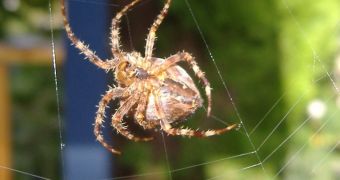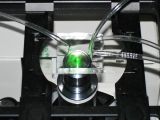It's elastic, stronger than steel, it has light weight and we can't fabricate it. At least not up until now. After decades of trying to replicate it in experiments ranging all the way from lab dishes to silk-secreting goats, German researchers have succeeded in creating an artificial spider duct that can 'spin' silk much like a real spider does, thus opening the way to creating high performance bulletproof vests and optical fibers.
Artificial spinning duct
Real silk spider ducts spin silk by secreting simple protein fibers. Each duct contains a gland that processes a gel of proteins into protein fibers, each with a different chemistry so that in the end the overall properties of the silk fiber are given by the different combination of proteins. All previous attempts to replicate the spider ducts have failed. The glass chip artificial duct however, is able to mimic most of the processes during silk spinning.
"The best thing is to reproduce nature, instead of cutting open spiders", says leader of the study, Andreas Bausch from the Technical University of Munich. Bausch has teamed up with Thomas Scheibel from the University of Bayreuth and created a device that copies the chemical and physical conditions of a real silk duct.
Usually, silk spiders secrete more than two proteins while spinning silk, although the artificial glass chip duct works with two proteins known as ADF3 and ADF4.
Mechanical properties
The two proteins are pumped inside the chip through tiny tubes and shaped into small spheres 1 to 5 micrometers across by exposing them to a phosphate salt solution. While extruding the silk from the chip the proteins suffer a increase in acidity and a decrease in phosphate concentration, allowing the protein spheres to join together and increase flow rate so that they are drawn out into long protein fibers.
Although the silk obtained from the two proteins has proven to be chemically stable, it still lacks some of the basic mechanical properties of real spider silk. Through this method artificial spider silk could one day be produced on an industrial scale.
Possible applications
Other notable applications for artificial spider silk may involve the regrowth of damaged nerves or even encapsulating drugs. Ultralight bulletproof vests could soon become reality, although until the mechanical properties of the artificial silk are enhanced it is useless. "I have to be skeptical about how it will impact manufacturing", says University of Wyoming researcher Randy Lewis who did not participate in the study.
Shuguang Zhang from MIT on the other hand, appears more optimistic. "Their findings will for the first time allow industrial development of spinning spider silk with the recombinant spider proteins.", he says.

 14 DAY TRIAL //
14 DAY TRIAL // 
